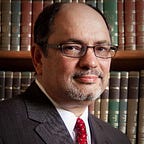INFORMATION REFORMATION
I wrote the following article two decades ago when I was a technology evangelist at Sun Microsystems. Back in the mid-’90s we experienced the early part of the first wave of “The Web.” Today newer Web technologies have expanded what was largely a “reader-oriented” phenomenon into a dynamic read-write participatory social platform. While the mantle of managing information has passed to a new generation of companies, the basic principles of information production and exponential growth remain the same.
Every October 31, we observe the anniversary of the German Reformation. Presently, there is a lot of talk about the Internet Explosion. There are several significant similarities between the two.
Indeed, one could call it the “Information Reformation.”
HIGHLIGHTS:
1) Common Language:
- Martin Luther made previously exclusive information accessible to the common man by publishing in the common language (German), not the language of scholars (Latin).
- With the aid of graphical tools like Mosaic, Netscape or the HotJava browsers (a Java-based browser from Sun), anyone can easily read the Internet and discover new information without knowing classical Geek.
2) Common Format:
- Luther published pamphlets, extending the existing single page “broadside” to multiple pages in quarto and octavo sizes. He featured pictures using the finest woodcuts and engravings of the times.
- Graphical Web browsers that take advantage of open, standard HTML make information pictorial and, with advanced Java capabilities, dynamic, and multimedia.
3) Mass Distribution:
- Luther’s 95 Theses, with the aid of the movable type printing press invented a few decades before his birth, were distributed to the masses. Within two weeks, it had spread throughout Germany. Within a month, it was all over Europe. By the end of the year, it had spread beyond the Holy Roman Empire.
- With the availability of interconnected computer networks, like those offered by Sun, information is quickly distributed all over the World Wide Web.
4) Unprecedented Growth:
- Between 1517 and 1523, publications in Germany increased 7 times. Half were Luther’s writings.
- The growth of the Internet and the availability of information on the Web has grown phenomenally, with a growth curve that appears almost biological.
5) Broadcast Marketing
- Luther took advantage of the new printing press to “evangelize” his views on theology and detract from his competitors with his pamphlets.
- Many companies, organizations, and individuals now take advantage of Internet home pages to “market” and promote their product, offerings, and views.
BACKGROUND:
In the 16th century, as a result of a dispute concerning certain Church practices, a German University professor posted a call for debate on their equivalent of a bulletin board, the door of the Castle Church. These 95 Theses were not intended as a call to reformation but a quiet, scholarly discussion of theological issues.
So it was, on October 31, 1517, that this 33 year old Augustinian monk named Martin Luther nailed the 95 Theses on the Wittenberg Door, marking what historians conveniently use as a coat hanger for the beginning of the Reformation.
But it was two significant things that changed history: first, one of Luther’s friends took the original Latin 95 Theses and translated them into German, the language of the common man. Now they were available to anyone who could read.
Secondly, with the aid of the movable type printing press, invented not far away in Mainz by Gutenberg toward the end of the previous century, copies were distributed to the masses. It became a veritable manifesto for change.
Thus it is with the spread of the Internet. So one could say we’re currently experiencing more than an Internet Explosion or Revolution, but an Information Reformation.
Bill Petro, your friendly neighborhood historian
www.billpetro.com
If you enjoyed this article, please consider leaving a comment, or subscribing to the news feed to have future articles delivered to your feed reader, or to your email.
